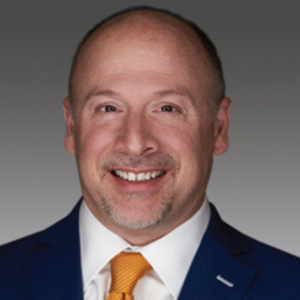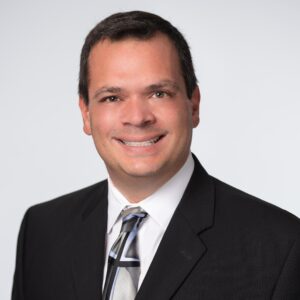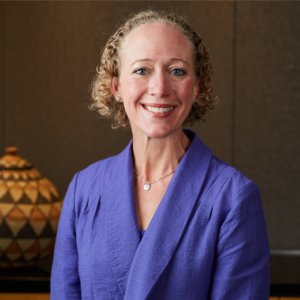The IDT in care planning
In a recent draft report on the work of The Food and Dining Clinical Standards Task Force, (convened by the Pioneer Network and the Rothschild Foundation), Carmen Bowman and Linda Handy note the critical role that the interdisciplinary (IDT) team and its constituent members play in care planning. They cite CMS interpretive guidance language at F-tag 280 [Care Plan Development] which states:
“Interdisciplinary” means that professional disciplines, as appropriate, will work together to provide the greatest benefit for the resident.1
But successful implementation of dining or any new standards will depend in large part on the issue of how we will work together in teams to meet the challenge of providing person-centered care.
What does it mean to function as a truly interdisciplinary team? A team representing different disciplines (multidisciplinary), meeting together, has often been considered evidence that interdisciplinary thinking is taking place. But interdisciplinary thinking is a challenging process in which team members must do more than simply hear and perhaps honor the contributions of members from other disciplines. It is, however, actually absent from most multidisciplinary organizations.
Even to willing students who desire to learn to engage in interdisciplinary thinking, the challenge is that we all have been indoctrinated, by virtue of our professional training, to learn and demonstrate different disciplinary processes that dictate the frame through which we approach solution finding. To receive our professional credentials, we become experts in our respective disciplines, and this disciplinary perspective informs our approach to process, problem solving and recommendations. Even when engaged in “out of the box” thinking on a team, we are all trying to get out of different boxes with parameters set by disciplinary training. There is no malevolence in this; we do it because we have been well trained in our professions and these thought patterns and perspectives become familiar and habitual. Indeed, we are professionals when we are true to our training, and our thinking represents the best practices, expertise and historical perspective of each discipline.
However, the interdisciplinary team approach mandated in F-tag 280 is there for a reason. Disciplinary knowledge is valuable, but not enough. Our residents, and all humans, are multifaceted; the challenge of creating an environment in which they are viewed through a holistic lens cannot be met within a single frame. To create home for each person requires a truly interdisciplinary approach, so we need to get interdisciplinary thinking on the agenda of basic competencies for everyone on the team. We must make a conscious, systematic effort to do this.
In their paper, “Thinking Across Perspectives and Disciplines,”2 Matthew Miller and Veronica Boix-Mansilla of Harvard Project Zero examine professional problem solving and specifically look at care teams that include nurses, social workers, doctors, therapists and others “working together to manage a patient’s care.” Such interdisciplinary-thinking teams, by being open to insights and observations from those with differing perspectives, can use the synthesized knowledge of the resident to “propose a solution that would have been unattainable through single disciplinary means.”2
For example, using a strategy Miller and Boix-Mansilla call “advancing through checks and balances,” an analysis of a resident’s weight loss would bring together the dietitian, the geriatric psychiatrist and/or internist, the CNA and others who know and care for the resident in a team discussion. The dietitian presents a perspective of what food might work to bring her weight up, the psychiatrist might offer reasons why the resident might have lost her appetite, the occupational therapist might have ideas on improving her ability to eat independently, and so on. Rather than assuming it is one thing or another, the group brings to bear its knowledge of the resident through each member’s own disciplinary lens, and each team member would use the information provided by the others as a check on his or her bias and assumptions about the care recommendation.
Next, in a technique called “bridging the explanation-action gap” Miller and Boix Mansilla suggest that the information from certain of the disciplinary perspectives can be used to inform the action that will be taken.
Perhaps the psychological perspective on the loss of appetite defines the problem in a way that will enable the dietitian to find answers he or she would not otherwise have found. Or perhaps learning that the CNA has noticed the resident’s hearing getting worse, leading to a withdrawal and a loss of enjoyment, will indicate a social solution rather than a dietary one. As a colleague stated in a recent lecture at University of Maryland Baltimore County: “Interdisciplinary thinking ‘bridges disciplines, widens perspectives, makes connections and synthesizes or creates knowledge.’”3 Being aware of these techniques will allow team members to broaden their thinking and take into consideration the contributions of each discipline to synthesize a plan for care. Mutual respect and unity of purpose make single-disciplinary thinking a starting point, not the end result.
Interdisciplinary thinking is the work of a team. To lead this effort, it’s helpful to have a person who is able to synthesize the points of view, and help implement the techniques discussed above. In his paper “How Successful Leaders Think,”4 Roger Martin contrasts how conventional and integrative thinkers approach problems. The most salient point is that integrative thinkers see a problem as a whole, and examine how its various facets affect others. They do not accept conventional options; they consider multidirectional relationships between factors. They seek less obvious but potentially more relevant considerations when identifying key factors in decision-making. In short, they learn to resist the simplicity of “either/or” thinking. In our context, such thinkers avoid making trade-offs that are not person-centric.
Interdisciplinary approaches and integrative thinking can enhance the lives of those residing in nursing homes, but if the interdisciplinary team is not educated to really think like one, the results will not honor the complexity that each person represents. As a culture change movement, we will have to identify and educate leaders to use integrative thinking to transform their teams by using mature, truly interdisciplinary thinking.
“Interdisciplinary” means that professional disciplines, as appropriate, will work together to provide the greatest benefit for the resident.
Judah L. Ronch, PhD, is the Dean of and a professor at the Erickson School, University of Maryland Baltimore County, which offers undergraduate and Master’s degrees in Management of Aging Services as well as online and live Executive Education programs and customized industry training. He can be reached at
References
- Bowman C, Handy L. Proposed new dining practice standards. Pioneer Network, 2011.
- Miller M, Boix-Mansilla V. Thinking across perspectives and disciplines. Harvard Graduate School of Education, Interdisciplinary Studies Project; Project Zero, 2004.
- Lynch K. Petrovich Lecture, UMBC; February 24, 2011.
- Martin R. How successful leaders think. Harvard Business Review 2007. Available at: www.hbr.org/2007/06/how-successful-leaders-think/ar/1.
Long-Term Living 2011 August;60(8):18-19
I Advance Senior Care is the industry-leading source for practical, in-depth, business-building, and resident care information for owners, executives, administrators, and directors of nursing at assisted living communities, skilled nursing facilities, post-acute facilities, and continuing care retirement communities. The I Advance Senior Care editorial team and industry experts provide market analysis, strategic direction, policy commentary, clinical best-practices, business management, and technology breakthroughs.
I Advance Senior Care is part of the Institute for the Advancement of Senior Care and published by Plain-English Health Care.
Related Articles
Topics: Articles , Facility management , Regulatory Compliance











